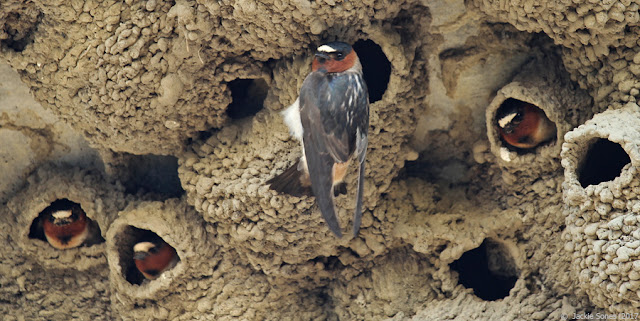If you're ready for another clue (or part of the answer), here's a photo showing a larger view:
The red mound-like structures in the first photo are compound eyes. The eyes are located on the radioles (feeding tentacles) of the tube worm, Pseudopotamilla socialis.
July 1st is International Polychaete Day, so it seemed appropriate to highlight these amazing polychaete eyes! (Polychaetes are segmented worms.)
Here's another view of the radioles of Pseudopotamilla showing the compound eyes:
The radioles form a fan or crown just outside of the worm's tube. The radiolar crown is used for feeding (capturing food particles from the water) and respiration. Because the compound eyes are found on the radioles, they're called radiolar eyes.
The eyes might serve primarily to detect shadows, so the worm can withdraw quickly into its tube (see below) when a predator (e.g., a fish) passes over. It's also possible the eyes are involved in more complex visual processing, but further studies are needed.
Pseudopotamilla socialis lives in the low intertidal zone along our shores. It's relatively small, but if you're looking very closely, you might catch a glimpse of its wonderful fan-like radiolar crown. And if you see the crown pull back in, you'll know that it's possible that the radiolar eyes detected your presence!
Happy International Polychaete Day!
P.S. Many thanks to Leslie Harris for confirming our identification.

















































